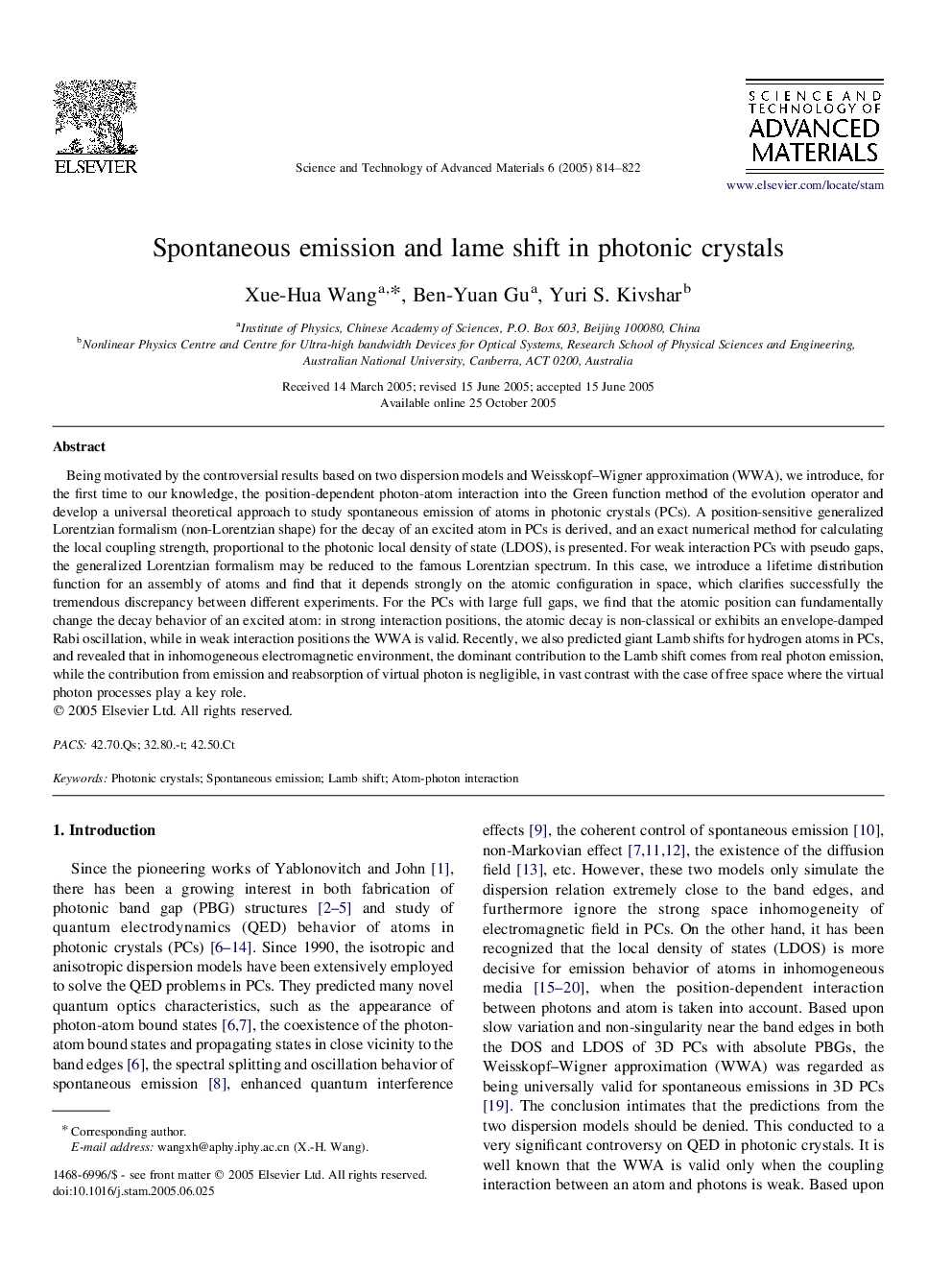| Article ID | Journal | Published Year | Pages | File Type |
|---|---|---|---|---|
| 9801326 | Science and Technology of Advanced Materials | 2005 | 9 Pages |
Abstract
Being motivated by the controversial results based on two dispersion models and Weisskopf-Wigner approximation (WWA), we introduce, for the first time to our knowledge, the position-dependent photon-atom interaction into the Green function method of the evolution operator and develop a universal theoretical approach to study spontaneous emission of atoms in photonic crystals (PCs). A position-sensitive generalized Lorentzian formalism (non-Lorentzian shape) for the decay of an excited atom in PCs is derived, and an exact numerical method for calculating the local coupling strength, proportional to the photonic local density of state (LDOS), is presented. For weak interaction PCs with pseudo gaps, the generalized Lorentzian formalism may be reduced to the famous Lorentzian spectrum. In this case, we introduce a lifetime distribution function for an assembly of atoms and find that it depends strongly on the atomic configuration in space, which clarifies successfully the tremendous discrepancy between different experiments. For the PCs with large full gaps, we find that the atomic position can fundamentally change the decay behavior of an excited atom: in strong interaction positions, the atomic decay is non-classical or exhibits an envelope-damped Rabi oscillation, while in weak interaction positions the WWA is valid. Recently, we also predicted giant Lamb shifts for hydrogen atoms in PCs, and revealed that in inhomogeneous electromagnetic environment, the dominant contribution to the Lamb shift comes from real photon emission, while the contribution from emission and reabsorption of virtual photon is negligible, in vast contrast with the case of free space where the virtual photon processes play a key role.
Related Topics
Physical Sciences and Engineering
Materials Science
Materials Science (General)
Authors
Xue-Hua Wang, Ben-Yuan Gu, Yuri S. Kivshar,
